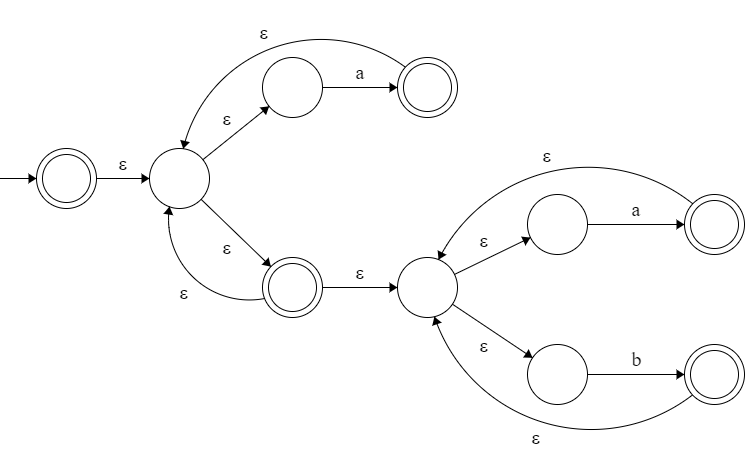I need to clear up some doubts when it comes to applying Kleene closure (star) when converting re to e-NFA. I constructed the following regular expression: $(a+(a+b)^∗)^∗$, but what is bothering me is the second Kleene star. For the first Kleene star i.e (a+b)*, I e-transitioned from the final states (let’s call this Fin_1) to the old initial state (let’s call this Int_1), but now when I applied the second Kleene star to $(a+(a+b)^∗)$ there are new final states (let’s call this Fin_2) that will e-transition to the new initial state (let’s call this Int_2). So the question is, do I need to e-transition again from the old final states (Fin_1) to the new initial state (Int_2) or I don’t touch Fin_1 and just focus on Fin_2? I attached the following images to show what I mean:
$(a+(a+b)^∗)$:

$(a+(a+b)^∗)^∗$:

Is the second graph correct for my regular expression or do I need to e-transition again from the old final states to the new?